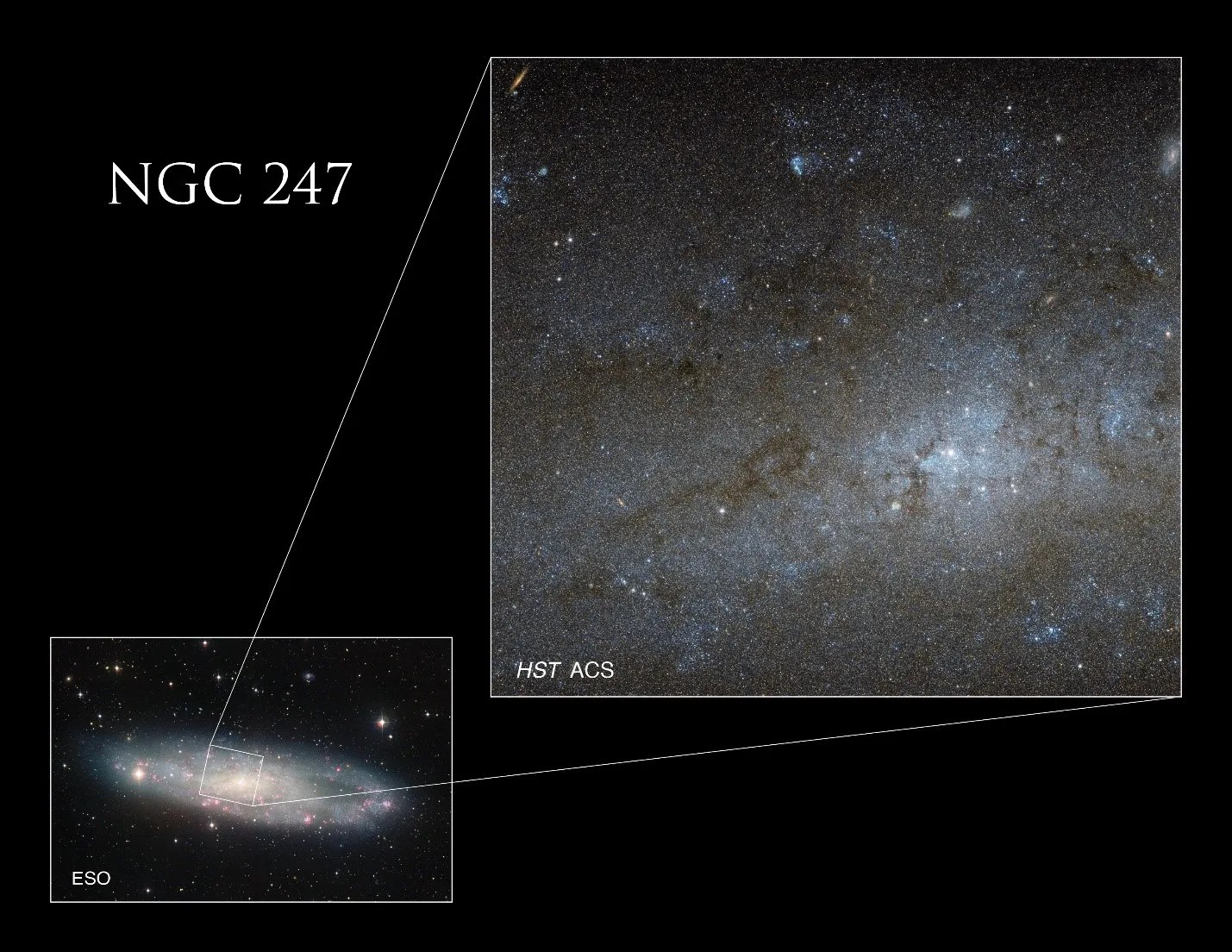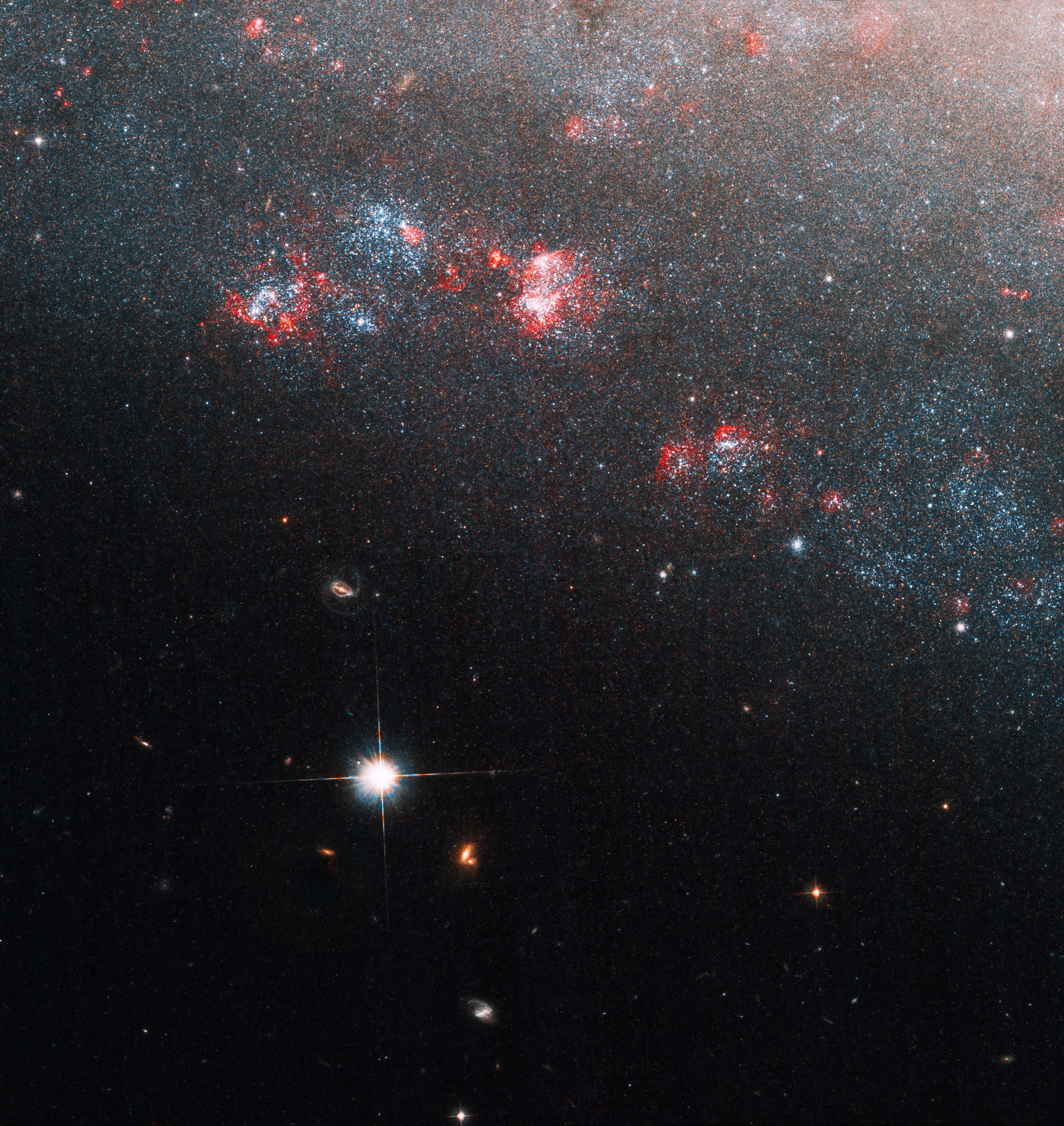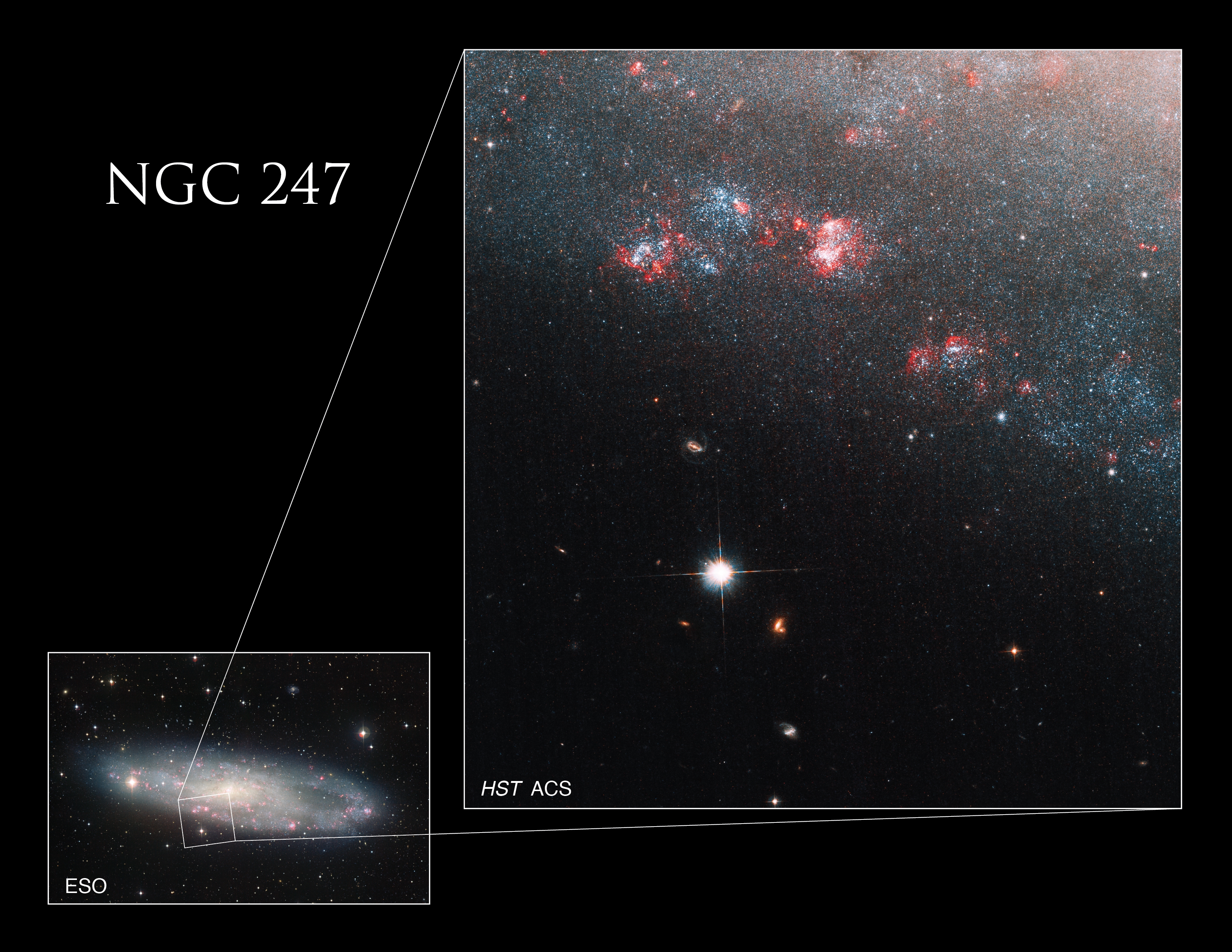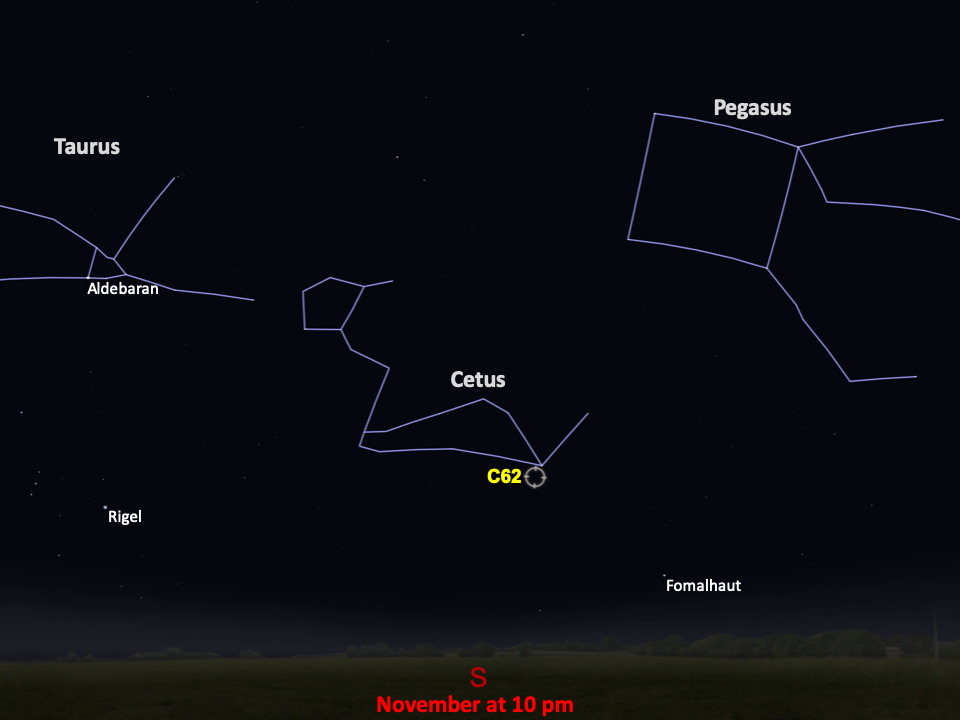Caldwell 62
This dwarf spiral is also known as the Needle's Eye galaxy.
Distance
11 million light-years
Apparent Magnitude
9.2
constellation
Cetus
object type
Dwarf Spiral Galaxy

We’ve introduced the Needle galaxy (Caldwell 38) and the Silver Needle galaxy (Caldwell 26) — now meet the Needle’s Eye galaxy. Caldwell 62 (also known as NGC 247) is a dwarf spiral galaxy located about 11 million light-years away in the Sculptor Group — the closest group of galaxies to our own (the Local Group). The galaxy was given its nickname because one end of it features a strange void of stars (not seen in this Hubble close-up of the galaxy’s starry center).
The image above is from the Advanced Camera for Surveys, which zoomed in on the heart of the galaxy, which appears as a bright, whitish area to the lower right of the image's center. Dark patches and filaments of dust are silhouetted against the region’s concentrations of stars.

The “hole” in Caldwell 62 is a big mystery. There is a shortage of gas in that part of the galaxy, which means there isn’t much material from which new stars can form. Since star formation has halted in this area, old, faint stars populate the void. Scientists still don’t know how this strange feature formed, but studies hint toward past gravitational interactions with another galaxy.

Caldwell 62 is also home to an object known as an ultraluminous X-ray source. Scientists have long debated the nature of these super-bright X-ray sources. Are they stellar-mass black holes gorging on unusually large amounts of gas? Or are they long-sought “intermediate-mass” black holes, dozens of times more massive than their stellar counterparts but smaller than the monster black holes in the centers of most galaxies? By studying Caldwell 62 in multiple forms of light (visible and infrared using Hubble, and X-rays using NASA's Chandra X-ray Observatory), astronomers have found signs that the X-rays are coming from a disk around an intermediate-mass black hole.
The colorful Hubble image above is part of an observing program that used both Hubble and Chandra to accurately measure the X-ray source's position and to identify its visible-light counterpart. By identifying the visible-light source of the bright X-ray emitter, astronomers will be able to better understand its physical nature and evolutionary history.

Discovered by astronomer William Herschel in 1784, Caldwell 62 is located in the constellation Cetus and is best viewed in the spring from the Southern Hemisphere. It appears low in the south in autumn skies from the Northern Hemisphere. Its 9.2 magnitude makes it a somewhat challenging target, but its strange “needle’s eye” appearance makes it worth the effort. As with most cosmic objects, the larger the telescope you view it through, the better Caldwell 62 will look.

Glossary
Dwarf Galaxy - A small, faint galaxy with only millions to a few billion stars.
Magnitude - The brightness of an astronomical object, represented by a number; bright objects have low numbers on the magnitude scale, while dim objects have high numbers.
Spiral Galaxy - A galaxy characterized by its spiral structure, with star-filled arms that extend out from the center of the galaxy and host regions of star formation.
Explore Hubble's Caldwell Catalog
The following pages contain some of Hubble’s best images of Caldwell objects.

Caldwell 1
Also known as NGC 188, this group of stars formed from a large cloud of gas making the stars roughly…

Caldwell 2
This shell of gas is expanding outward, away from the dying star within.

Caldwell 3
This barred spiral galaxy was first spotted by British astronomer William Herschel in April 1793 in the constellation Draco.




